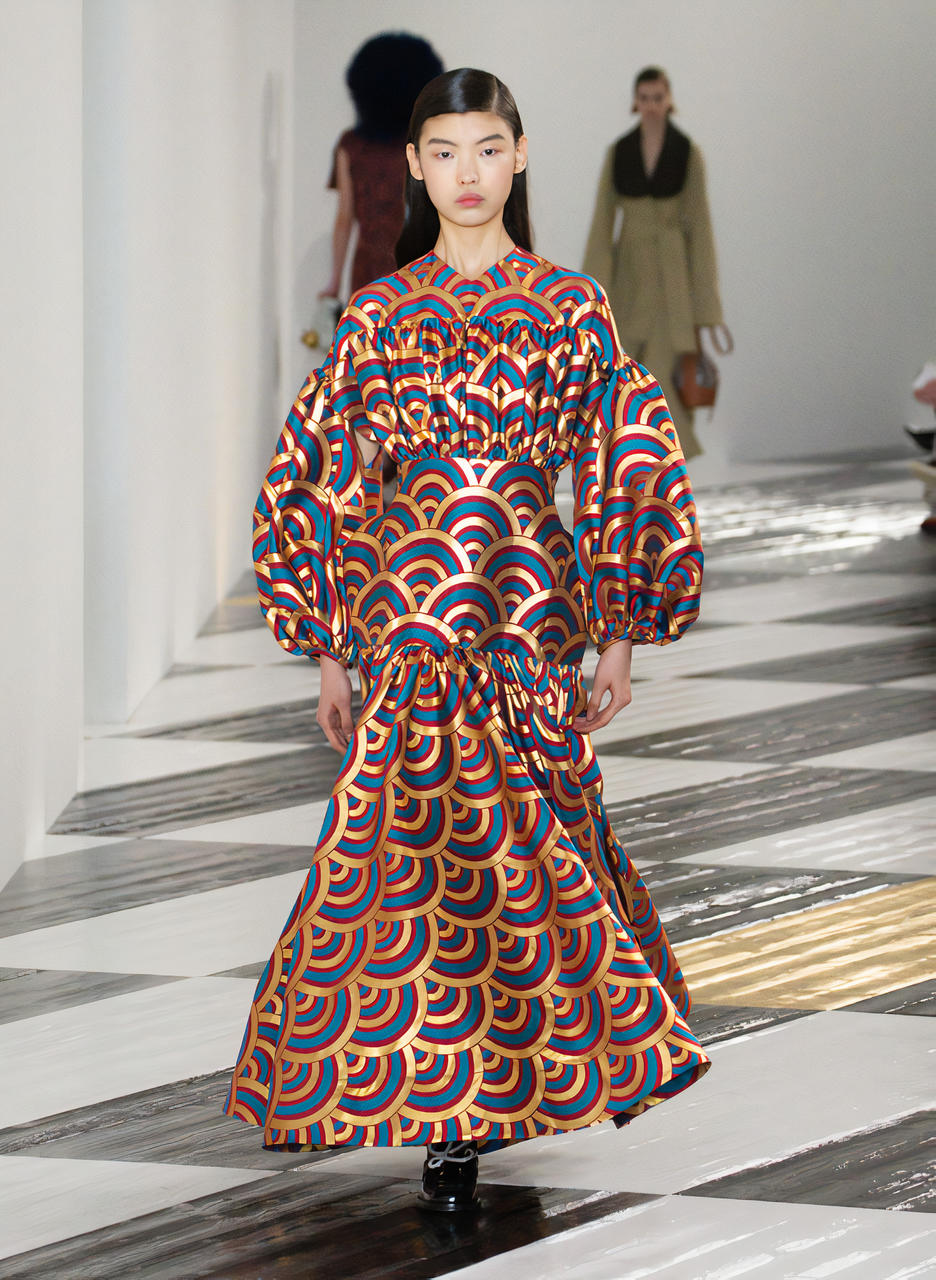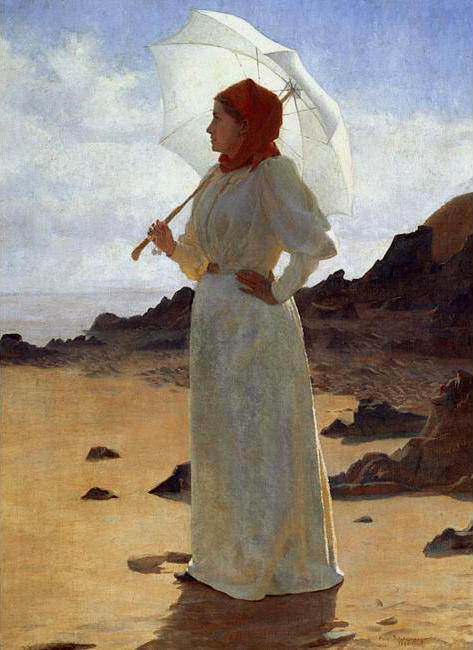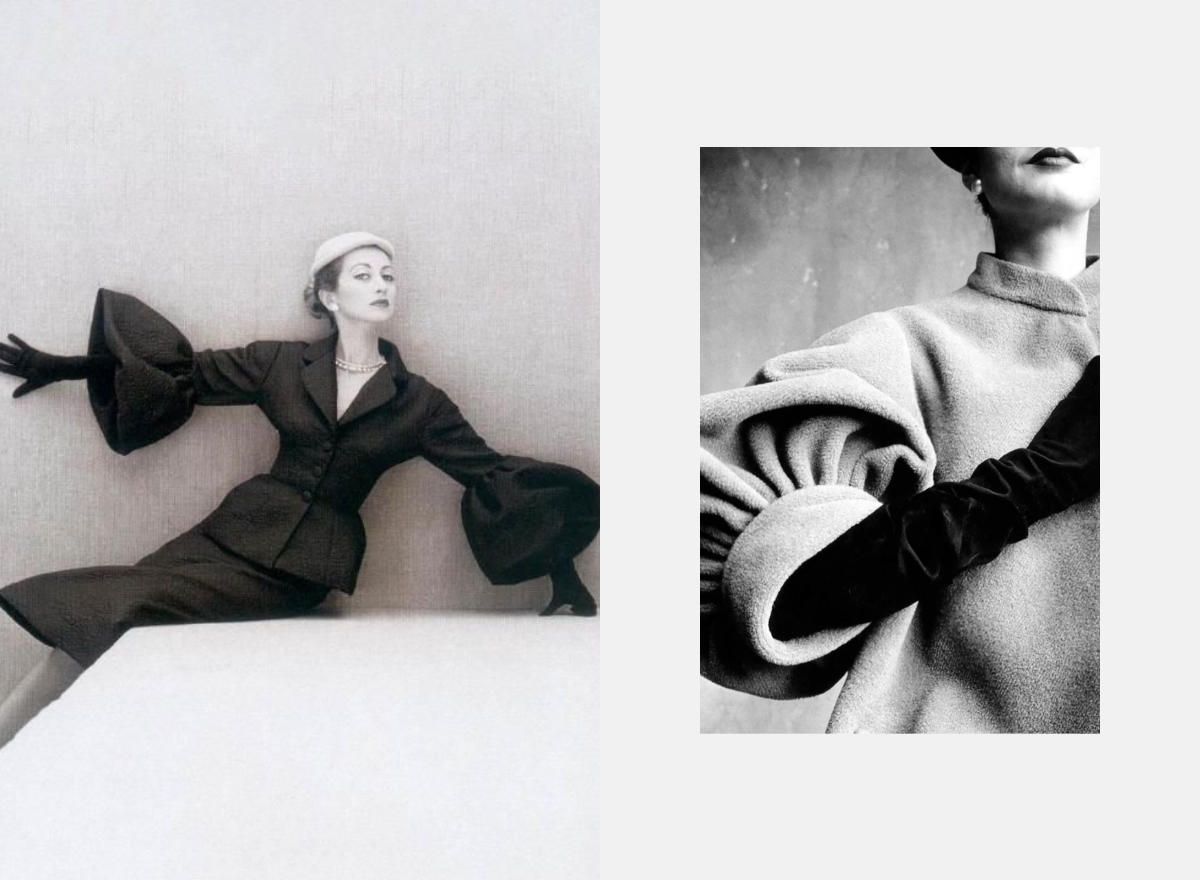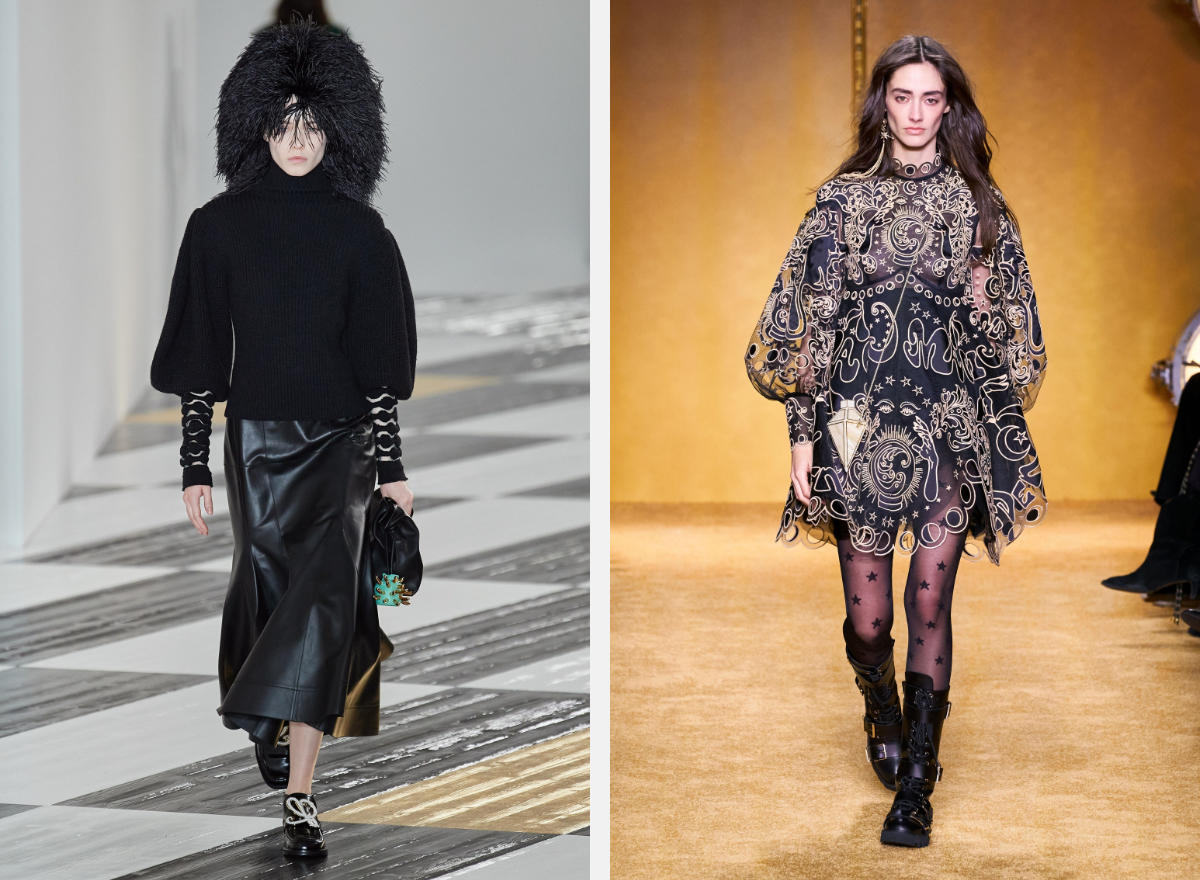
EXAGGERATED SLEEVES THAT SPEAK VOLUMES
Charting the style evolution
Words by Bridget Barnett
When it comes to sleeves this season, designers are dabbling in the drama of amplified shapes inspired by bygone eras. Here, we trace the trend back to its glory days.
1800s

Sleeves that are voluminous above the elbow and taper to a fitted bodice date all the way back to the 1800s. Referred to as either “mutton”, “gigot” or “bulbous” sleeves, the style was popularised by the biggest influencer of the time, Queen Victoria herself. It was a silhouette that symbolised luxury and complemented the equally puffy nature of skirts and elaborate headdresses. In fact, some outfits were so lavish that women had to enter rooms sideways.
1950s

Right: Image via pleasurephotoroom.wordpress.com
Cristóbal Balenciaga has always been known for strong, sculptured and dramatic looks. In the 1950s, the Spanish designer was credited with spearheading a change in fashion for women of the mid-twentieth century, in large part thanks to his “melon” sleeves. This creation embraced the proportions of the Victorian era, adding sophisticated, clean and monochromatic updates.
NOW

If Autumn Winter 2020 runways have shown us anything, it’s that, going forward, sleeves are still looking back. LOEWE references nostalgic shapes with sleeves that nip in over elbows for a glove-like effect; at Zimmermann, mutton sleeves accentuate pretty printed dresses; and at Fendi, cosy billow-sleeve sweaters tighten over knuckles. Let’s also not forget Balenciaga whose extravagant sleeves hang from shirts like capes—that’s our kind of arm candy.
Ready to add a dose of drama to your own wardrobe? Shop Lane Crawford’s edit of exaggerated sleeves below.